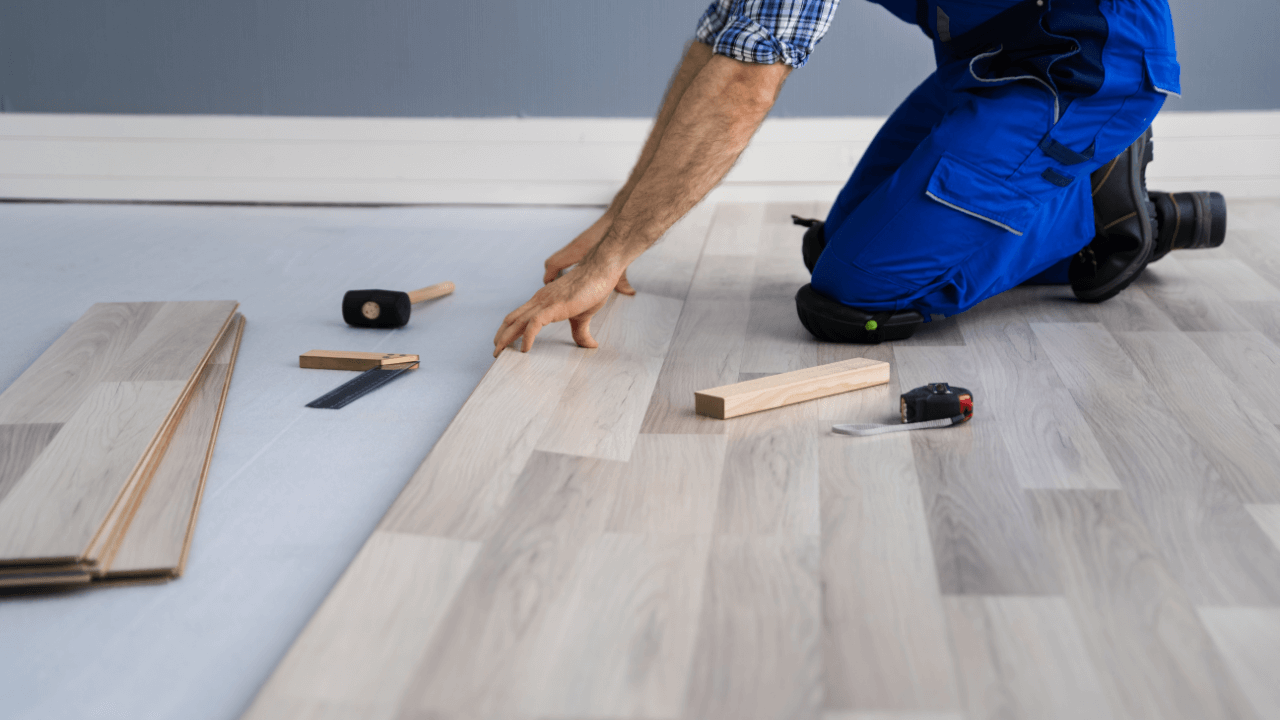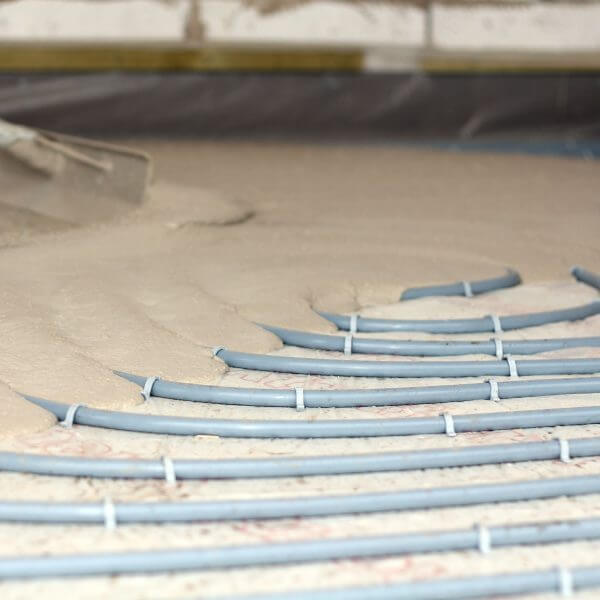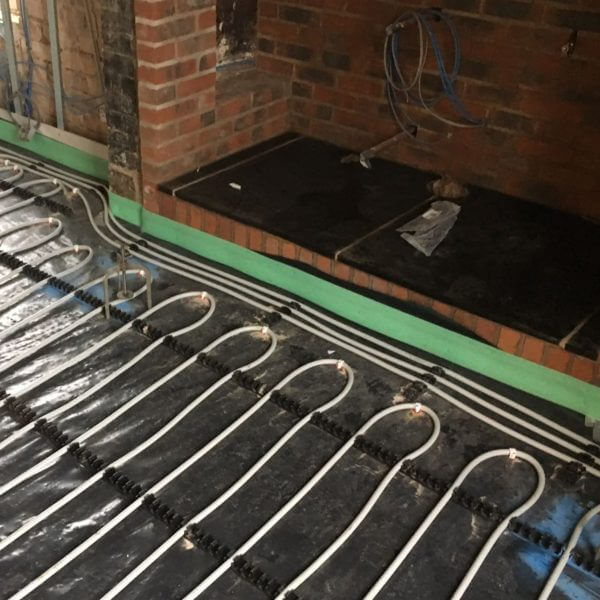The Complete Guide to Underfloor Heating & Flooring Finishes

Underfloor heating is a great way to heat a home and, when covered with floor screed, provides a solid foundation for a variety of high-quality floor finishes. However, there are issues to take into consideration. If you install a finish that is not properly adapted to underfloor heating, it may reduce the efficiency of the system or prematurely ruin the floor finish.
EasyFlow’s guide is here to inform you of all considerations, whether you plan to have underfloor heating for wooden flooring, tiles, or carpets.
What is The Best Flooring for Underfloor Heating?
The best flooring finish for underfloor heating is one that efficiently transfers heat from the floor screed to the room above, without being damaged or warped over time. A floor screed resin is the most efficient, followed by tiles vinyl, wood, carpet, and laminate.
Underfloor heating can work with any floor finish, as long as it has been built to accommodate for the cycle of being heated and cooled.
Tiled Floors
Underfloor heating with tiled floors is one of the most efficient at transferring heat to the room above. Coupled with the fact that tiles are easy to clean and robust, they’re the perfect choice for corridors, utility rooms, kitchens and bathrooms.
If you are planning to install underfloor heating for tiled floors, care must be taken to select tiles and adhesives compatible with underfloor heating. These will have been made to compensate for frequent heat expansion and contraction when they cool, reducing the risk of the floor finish cracking or separating from the floor screed.
Wooden Flooring
Both solid and engineered flooring are compatible with underfloor heating, with engineered flooring being far more effective at heat transfer due to its naturally thinner size. They are great finishing options for almost every room in a property, save for rooms with high water exposure like bathrooms.
Solid wood is less ideal as it is more insulating, disrupting heat transfer efficiency. If not kiln-dried and properly acclimated for underfloor heating, solid wood can warp, crack, and bend from the heating-cooling cycle. A floor temperature sensor is highly recommended for use with solid wood flooring finishes, as it will help prevent the wood from overheating beyond its limits.
With both solid and engineered wooden flooring, boards should be no thicker than 18mm. Underfloor heating for wooden flooring will become much less efficient the thicker the boards are.
Carpeted Floors
Most domestic clients will highly desire underfloor heating for carpeted rooms like bedrooms and living rooms for the high level of comfort it provides. That said, carpeted floors, especially thick, plush carpets, will have some of the lowest heat-transfer efficiency compared to other options.
To mitigate this, you have to take into account the thermal overall grade (TOG) of the carpet and its underlay combined. This measures the insulating effect of the material; the higher the grade, the more insulating it is. For effective heat transfer of underfloor heating for carpets, the TOG rating of the carpet and underlay combined should not be higher than 2.
We would recommend avoiding felt and polyurethane-based underlays, as these have a higher TOG rating on average. We would also recommend you take into account if an additional rug is planned to be laid on the carpet, and factor the rug’s TOG rating into your calculations to account for it.
Vinyl and Laminate
These floors are very easy to clean, cost-effective, hard-wearing, and can mimic other floor finishes, making them popular finishes in commercial settings. But some of these finishes can be temperature sensitive and prone to warping from the heating-cooling cycle.
When choosing a vinyl or laminate floor finish, check the manufacturer’s instructions to see if it is compatible with underfloor heating and the maximum temperature the flow temperature of the zone can be set to. You may need to account for the installation of a floor temperature sensor to prevent overheating.
Polished Floor Screed
One can always consider polishing the floor screed with a resin to create a professional, durable floor finish, popular with commercial premises. This is by far the most efficient floor finish, as only a thin layer of resin is needed to cover the surface.




Where To Find Us